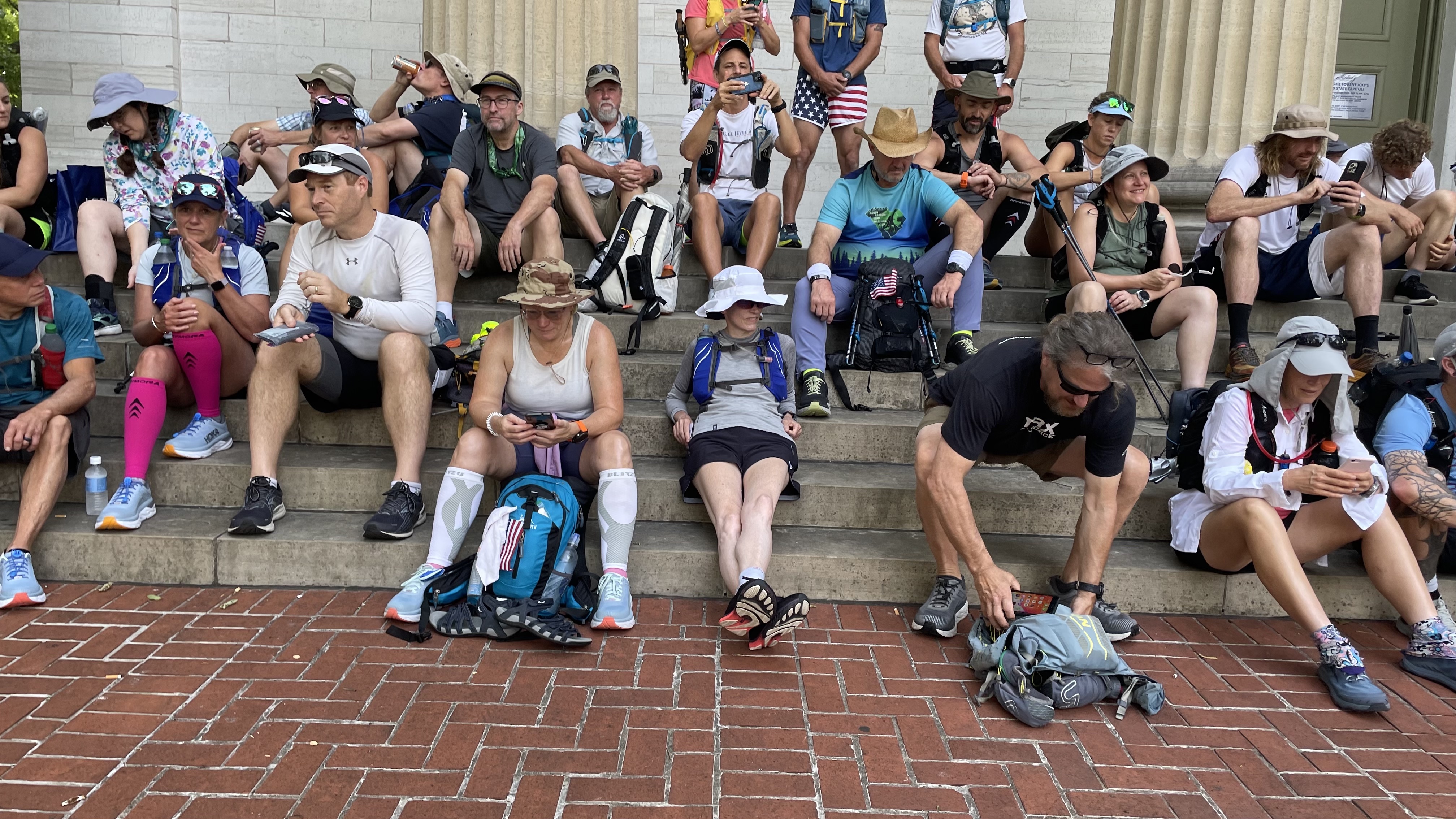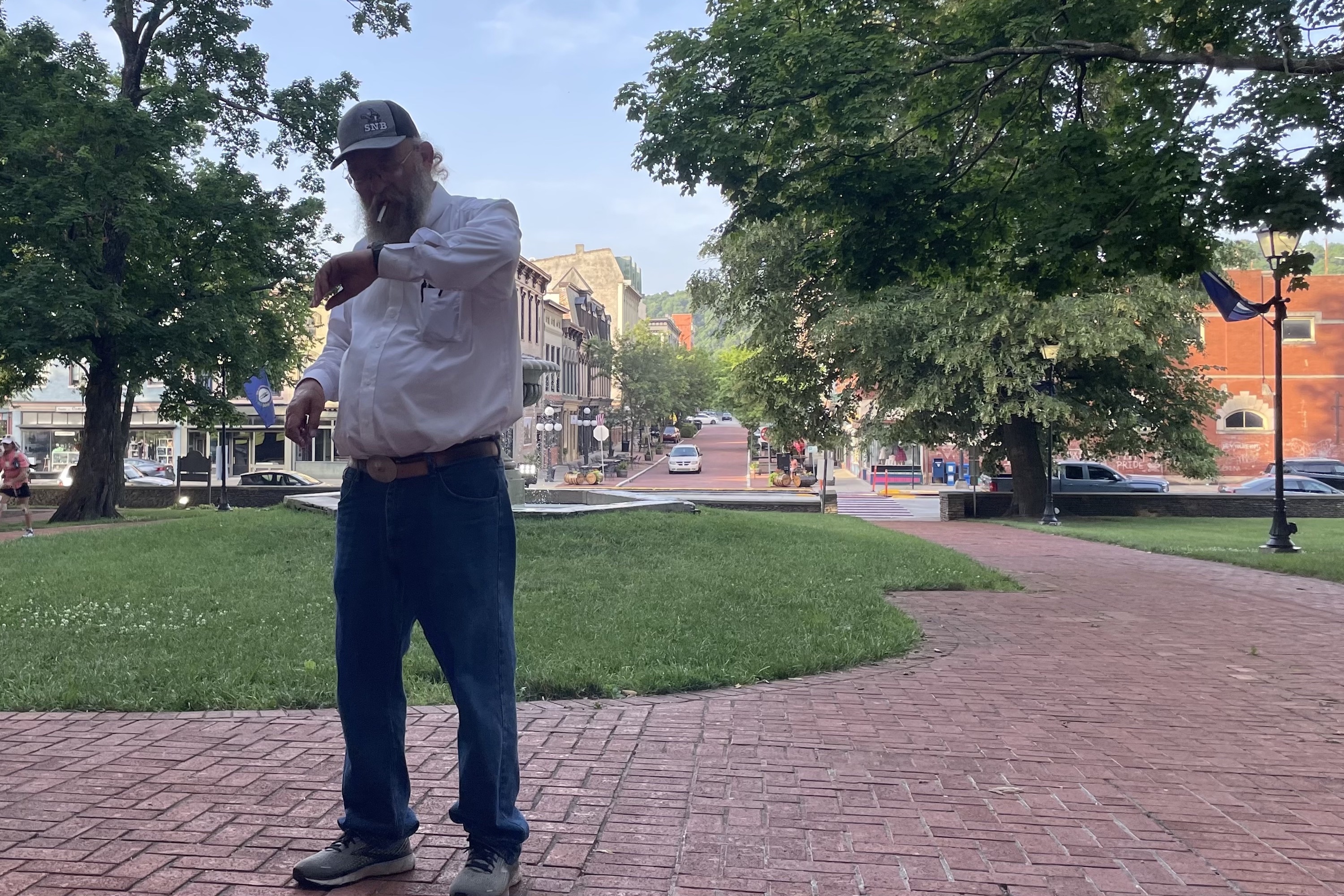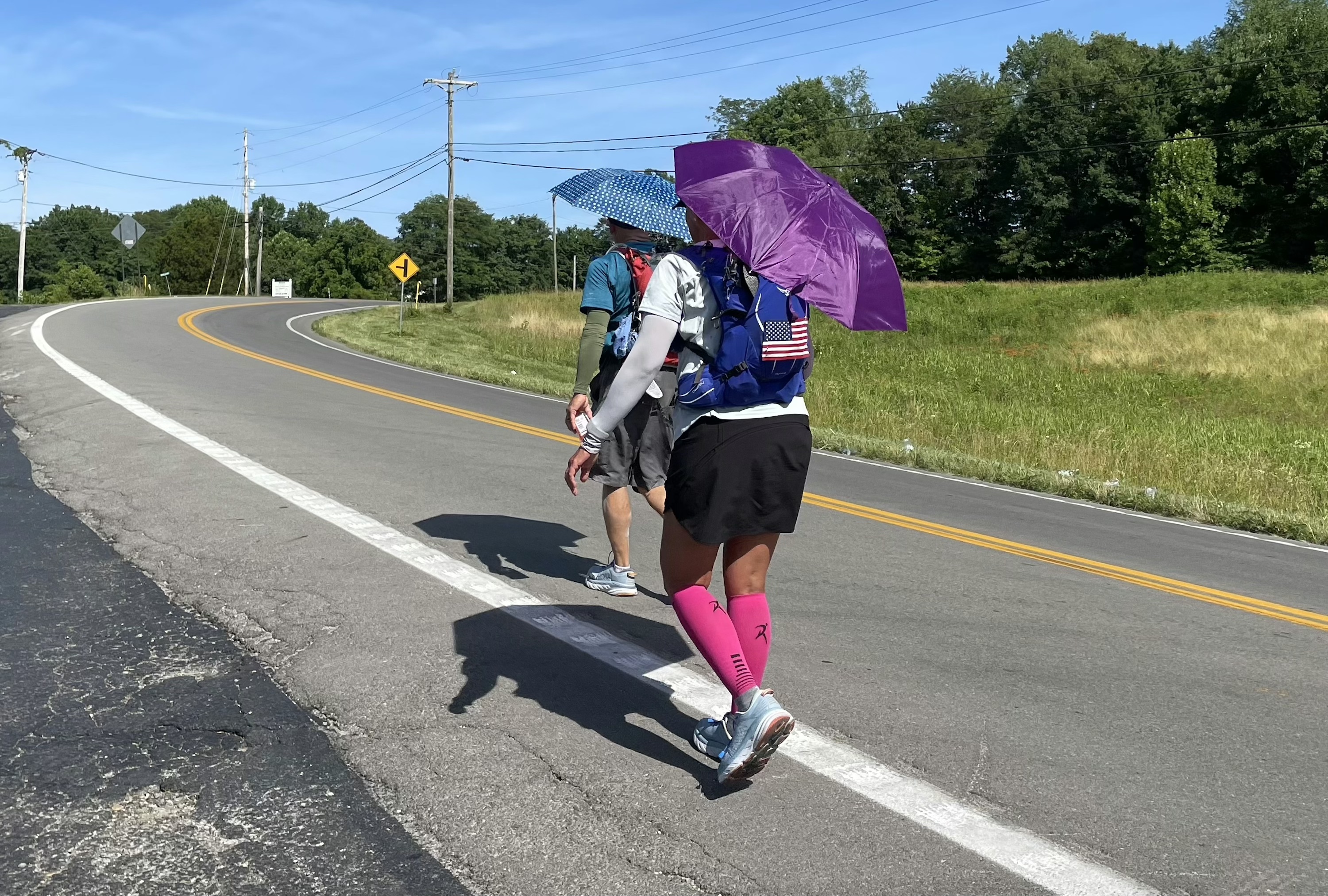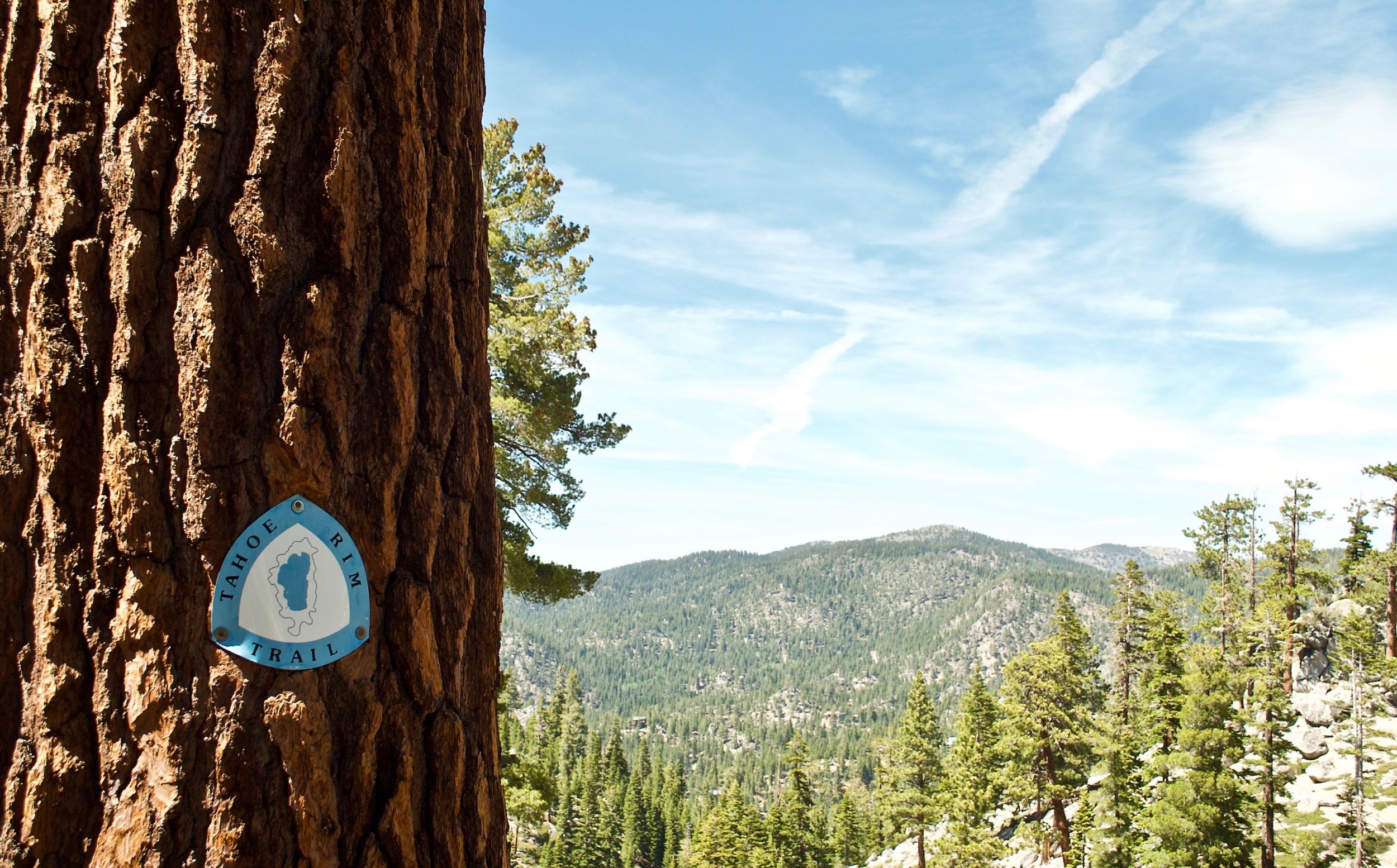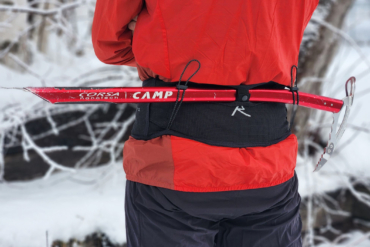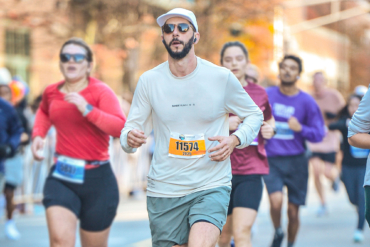Gary Cantrell, the infamous Lazarus ‘Laz’ Lake — creator of the dastardly Barkley Marathons — has another ultra-endurance creation. Experience the grueling ordeal of the Last Annual Heart of the South.
“The key to finishing when the weather is like this is to survive the first two or three days — and the word is ‘survive,'” world-renowned ultramarathon designer Gary Cantrell cautioned the 80 runners hoping to conquer his latest endurance creation.
Cantrell’s races are arguably the most unique in the ultramarathon world, each a testament to his genius for innovation and showmanship. Cantrell likes to include elements of secrecy, harsh environments, and eccentric details in each challenge. This, he believes, entices runners to confront their most imposing opponents: their own egos, hopes, and limits.
To win a Laz race, you must triumph over yourself.
Cantrell is most famous for creating the Barkley Marathons, where runners must traverse five 20-mile laps (100 miles) in Eastern Tennessee’s Frozen Head State Park in under 60 hours. With a secret application process and starting date, mountainous terrain in early spring, and a requirement to remove pages from books strewn along the course to prove progress, it is the epitome of a Lazarus race.
And runners can’t get enough of his challenges.
In 2020, Cantrell created the Last Annual Heart of the South (HOTS) after a technical glitch allowed too many people to register for one of his races, and he needed to accommodate the overflow. Now, anyone who wants to test themselves can sign up for this popular event.
—
With HOTS, Cantrell maintained his themes of secrecy, harsh environments, and eccentric details while creating a race different from anything he had designed before. The start of the race is secret. Participants only know that they will begin between 300 and 350 miles from “the Rock,” a cliff in northern Georgia that serves as the race’s finish point.
This year, they’re driven 327 miles over the roads that constitute the course — seeing each hill and supply desert, that they will endure on their return — to the start in Frankfort, Kentucky. Runners must also rely on themselves to find food, shelter, and water along the way.
And they must do this all while battling the “Grim Reaper,” the name given to the minimum mileage each runner must achieve twice a day to avoid disqualification. In total, the runners must finish the entire race within 10 days to avoid succumbing to the temporal scythe.
The only guarantee is that this quest for basic necessities in the southern summer will be grueling — hallucinations and physical deterioration are expected.
—
Gina Kimrey listened eagerly to Cantrell’s advice. A single mom in her early 50s, Kimrey was unshakably enthusiastic — whether from nerves, a naturally sunny personality, or naiveté of the struggle ahead. Genuinely friendly, it was as if her smile alone couldn’t fully convey her happiness, so it overflowed into every interaction.
But beneath her friendliness was intense courage. She had been intrigued by the Last Annual Heart of the South since its start 2 years ago. And despite having never completed a marathon (let alone an ultra) before — her record was 17 miles — she enrolled.
HOTS Hopefuls Begin the Journey
The next morning on Thursday, Kimrey walked the block to the official starting line — the steps of Kentucky’s Old State Capitol building. As the sun began to top the surrounding trees burning away the cool of the morning, racers milled around the brick walkways and sat on the steps under the Capitol’s ionic columns.
Naresh Kumar stood in the crowd in front of the stone building. Originally from India and in his late 30s, Kumar has never met a stranger he didn’t like. Intensely charismatic but also humble, Kumar effortlessly befriends anyone he meets. He says that “vulnerability is the key to human connection,” and he knew vulnerability was inevitable in this race.
His smile hid his anxiety. He’d been awake all night thinking about the distance he would have to cover. Fifteen minutes before he had to be at the steps, he resigned himself to reality and finished filling his pack. Despite the scarcity he was about to face, he could only manage a muffin from the hotel breakfast bar.
But he wasn’t anxious because this was new; instead, he was all too familiar with what was coming.
—
In 2011, Kumar ran 314 miles across southwest Tennessee in the Last Annual Volunteer State Race, another creation by Cantrell, coming first in the category of unsupported runners.
In 2017, Kumar rode a tandem bike across New Zealand allowing strangers to ride with him to fundraise for anti-trafficking causes. Two years later, he repeated this feat by riding from Chennai, India, where he grew up, to Germany. And he completed the Silk Road Mountain Race, a mountain bike event in Kyrgyzstan covering over 1,000 miles.
He knew the constant pressure he was about to endure; every 12 hours, racers would have to travel 16 miles to beat the ever-advancing “Grim Reaper.”
At exactly 7 a.m., Cantrell signaled the start of the race with his signature move, lighting a Camel cigarette.
The runners swept down the Capitol steps and turned into the road like a school of fish piloting their way through the ocean. Relief washed over Kumar; the months of training and preparation were finally over.
Pain Aplenty
Immediately, the runners had to prove their fortitude. From Frankfort to Lexington and beyond, racers admired idyllic Kentucky horse farms but struggled through supply deserts and the South’s infamous humidity.
By the end of the first night, Kimrey was without water for the first time in her life. She passed some bars in Lexington but couldn’t overcome her reluctance to enter and ask for water.
Soon her thirst and panic overwhelmed her shyness, and she banged on the door of a Salvation Army shelter until a woman unlocked it. Kimrey ran to a water fountain, threw her pack to the floor, and began to drink.
“I look like a horse that is dying at this point. I am just slurping down the water.”
The woman must’ve pitied her; she held out a giant styrofoam cup of ice. Kimrey grabbed it, filled it at the fountain, and chugged the whole cup. She refilled it and gulped the water, finally setting it down to catch her breath.
She thanked the woman and left, but the experience had shaken her resolve. Later that night, she sat in front of a Walgreens inspecting her painful toes and struggled to lift her spirits.
She remembered Cantrell’s advice the night before not to quit. Doubt crept in: “What are you doing? Why are you out here? You know, you’ve got no business out here …”
She pushed these doubts from her mind and set off again with the company of another runner. She had escaped the lure of quitting. For now.
—
On Friday morning, Kimrey sat inside an abandoned stone tunnel, 44 miles from the start. She had braved the onslaught of speeding vehicles while navigating sharp switchbacks on a road with no shoulder so she could rest in Boone Tunnel, a remnant of the old highway now hidden by poison ivy and overgrowth.

Surrounded by the graffitied walls, she sat on a boulder staring at her bare left foot. A toenail had ripped out of the nail bed and hung by slivers of skin, and a blister wrapped around her heel.
Cantrell and his race assistant, Carl Laniak, had found her in the tunnel and watched as she tried to decide what to do with her deteriorating foot, self-conscious in front of her audience.
After a few minutes, Laniak and Cantrell turned to walk out of the tunnel. She watched as they got smaller and glanced away. When she next looked up, they were gone. “Like your best friend had just left,” she recalled.
Kimrey then decided to try to nap since she hadn’t slept for over 24 hours, the rush of the cars hurtling past the tunnel opening as her only company.
Rooted in Doubt

When Cantrell chooses a course for HOTS, he knows what the runners want.
“The groups that do this is a different breed; they want to be challenged; they want to have doubt,” he says.
That doubt comes for everyone on the road, and it came for Kumar on Saturday night, the third night of the race.
He had traveled almost 150 miles, and his feet were so blistered he needed his trekking poles to help support himself. He struggled with dehydration the first couple of days; he had been cramping, and his urine was as dark as Guinness beer.
The sight was startling, and the possibility of permanent kidney damage terrified him. His system had rallied, and he continued powering through the miles.
—
On Saturday night, after crossing the Wolf Creek Dam over the Cumberland River, Kumar briefly forgot his injuries as the night filled with lightning bugs. In awe, he watched the blinking green lights surrounding him in the dark.
“All that pain and suffering that you’re going through at that time just vanishes in that moment. It was spectacular scenery.” But it was only a momentary respite.
He struggled forward trying to hold his poles and his flashlight, berating himself for not replacing his lost headlamp. Miserable, he allowed himself to contemplate quitting; the fun of the adventure had gone.
But when he thought about everyone who knew who he was doing this race, including the running communities in India, he knew he couldn’t quit so easily.

At this point, continuing was easier than quitting and explaining it to all those people. He struggled through until he couldn’t keep his eyes open anymore.
The heat of the day was gone, and he was cold so he found an unlocked shed behind a church. He snuck inside, flattened an empty cardboard box as a mat, and fell asleep on the concrete floor.
The Mental Game
Roughly 60 miles behind Kumar, Kimrey did not think the lightning bugs were spectacular; she felt like they were eyes watching her. It had been 3 days, and she’d had an hour and a half of sleep. And when she finally removed her right shoe in the tunnel, she’d discovered another loose toenail and another blister wrapping around her heel.
She had fallen 2 miles behind the Grim Reaper and needed to push on, ignoring the eerie howls of coyotes as she traveled in the dark.
But her exhaustion had begun to shake her reason. She was thrilled when a woman pulled up and began to walk with her, lifting her spirits and setting a quick pace.
When the woman decided to head back to her truck, Kimrey continued before stopping and looking back. She couldn’t see the woman in the dark, and to her befuddled mind, the most likely explanation was that the woman never actually existed.
Kimrey wondered if she had actually been hit by a car earlier in the night and did not realize she was dead.
“This was my guardian angel leading me to the hell that was going to be my entire afterlife,” she thought, “walking these stupid highways in the dark and the cold and then the heat of the day. That was my afterlife. That was my hell.”
Later that night, she saw a tall mailbox and froze in terror. “I’m dead,” she thought, delirious from exhaustion. “That lady was my guardian angel. And this is the Grim Reaper.”
—
Kimrey survived the Grim Reaper for that night — both the cutoff and the one in her imagination, but she fell even further behind the next day. The pain in her feet and now knees was excruciating, and her dream of finishing seemed impossible.
At mile 108, Kimrey surrendered, and called an Uber to a hotel. But after a good night’s rest, she lamented her decision; she had come so far, about six times the length of her previous record.
Race Obstacles
By Wednesday, 6 days into HOTS, Kumar had battled through 280 miles. Since his miserable Saturday night, he had snatched rest where he could get it: a school playground, a park bench, and the floor of a public restroom trying to ignore his shivering and the moths crawling over his body.
One evening, he woke up from a nap having not had much to eat that day; when he realized that the only store ahead where he could buy food was going to close in an hour, he sprinted about 5 miles to get there.
He arrived with minutes to spare, narrowly avoiding the hours of hunger he’d have to endure that night. Blisters on the bottoms of his feet had pushed between his toes, making each step a fight to gain ground.
And now he was so close to the finish. In about 24 hours, he could rest at the Rock.

But a runner can’t take anything for granted out on the road. As Kumar continued to the Rock, a snarling pitbull ambushed him, baring his teeth.
Kumar fended off the 100-pound dog’s lunges with his trekking poles. He heard a woman nearby order, “Don’t be aggressive,” and he thought he was rescued. But she repeated, “Don’t be aggressive to my dog.”
—
Kumar was stunned. “Your dog is trying to bite me,” he responded. The woman continued to berate Kumar as he moved to safety.
After calling the runner behind him to warn him, Kumar continued running until his phone rang. He listened dumbfounded as the man he had just called told him to get off the road.
He explained to Kumar that a green pickup truck had veered off the road next to him, studied him, then sped off. The runner told Kumar he thought the dog’s owners were looking for him. Kumar walked to a church parking lot and called the local sheriff’s office, watching as the truck drove past.
After talking to the sheriff, Kumar continued down the road. Feeling like a hunted man, he pressed on, not willing to surrender.
The Journey Is Its Own Reward

Every ounce of sweat and determination Kumar had shed on the road paid off the next day. On Thursday afternoon, Kumar reached the northern Georgia ranch and ran between soybean fields and over a path cleared through the lush forest to a clearing where Cantrell and Laniak had set up camp.
He threw down his poles and jogged to the Rock, the cliff that overlooked Nickajack Lake. And then he stopped.
—
Kumar had traveled 327 miles in 7 days, 7 hours, and 15 minutes, becoming the 15th of 57 finishers this year. It was an emotional end for Kumar; he was relieved that he could stop pushing, but sad that the journey was over.
As for the threats so close to the finish, Kumar refused to let them spoil his experience. He chooses to remember the overwhelming support of road angels — the people who went out of their way to give the runners food, water, encouragement, and a place to rest. He said, “I got to see and experience the best of America and Americans in the Heart of the South.”
And it was those connections that inspired Cantrell in naming the race. “It’s the right name because the South has a lot of heart,” said Cantrell on the subject. “If you want to learn what America is really like, walk across it.”

